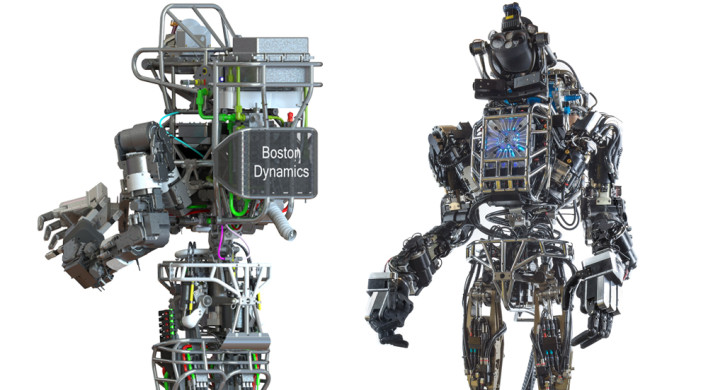Chuck Hagel, the U.S. Defense Secretary, has had a look at the life-size robot, which resembles the ‘Terminator’. This is the latest experiment by Pentagon employed, hi-tech researchers at DARPA. The massive Atlas robot is designed, not for war, but as a robot that would help rescue victims in the rubble of a natural disaster, according to officials.
Also Read What Is PAE And How To Enable It?
The Atlas robot is 6-foot-2-inches tall and is one of the many entrants in a contest which requires people to design and produce a man-like life-saving machine. The project is the brainchild of the Defense Advanced Research Projects Agency (DARPA). The competition was created in the aftermath of Japan’s Fukushima earthquake and tsunami disasters. The robots are required to navigate rough terrain, enter buildings and sift through rubble.

DARPA, showcased the Atlas robot to Hagel, but apart from some LED lighting, the humanoid robot was switched off on a “static” display. Head of DARPA’s Tactical Technology Office, Brad Tousley, informed Hagel that unfortunately the Hollywood film industry has created unrealistic expectations of what real robots can accomplish and to build a robot that can climb ladders or open doors and carry objects requires overwhelming feats of computer science and engineering.
Also Read New technology could allow batteries to last as long as 50 years
Scientists at the demonstration also showed Hagel the latest technology for prosthetics, this included a mechanical hand, which responds to brain impulses and a prosthetic arm that is controlled by foot movements. Hagel said that this new technology would have a dramatic effect on the lives of soldiers wounded in combat. “This is transformational…We’ve never seen anything like this before,” he said.
Justin Sanchez, program manager at DARPA and a medical doctor who works with prosthetics and brain-related technology, showed Hagel a film of a patient, whose brain had been implanted with a sensor. This allowed her to control a mechanical arm with her thoughts. Scientists then showed off the shiny black mechanical hand and arm, which responds to brain impulses. The prosthetic would have sensors that are attached which allow the fingers to send sensations back to the brain. Officials said, the tactile feedback system should be operational within a few months.
Also Read Man Creates A Spider-man Web-Shooter
NOTE: Feel Free To Comment....





0 comments: